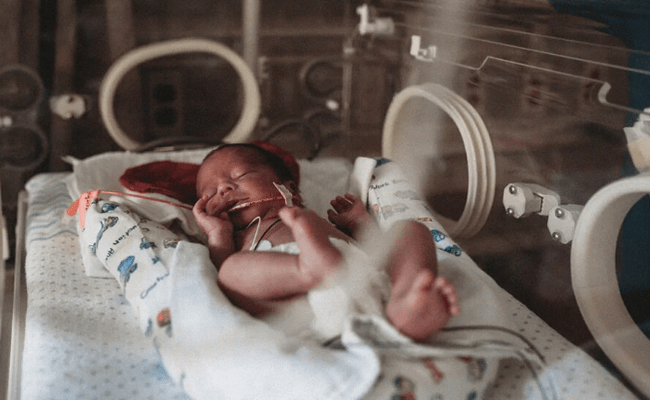Definition of Birth asphyxia or Neonatal Asphyxia:
Neonatal asphyxia or birth asphyxia is the medical condition resulting from deprivation of oxygen to a newborn infant that lasts long enough during the birth process to cause physical harm, usually to the brain. It may be defined as the failure of a newborn to establish spontaneous respiration immediately following complete delivery.

Causes of Fetal Asphyxia:
Asphyxia can result from:
- A lack of oxygen in the mother’s blood before or during birth.
- Separation of the placenta from the uterus too quickly.
- Long or difficult deliveries.
- Infections in the mother or baby.
- High or low blood sugar in the mother.
- Child with a blocked airway or airway that is not properly developed.
- Anemia in the baby (where the infant’s cells cannot properly carry oxygen to the organs.
Sign and Symptoms of Fetal Asphyxia:
When a child suffers from oxygen deprivation they may experience:
- Weak breathing or not breathing at all,
- Bluish and pale in color,
- Low heart rate,
- Poor reflexes and muscle tone,
- Seizures,
- Acidosis (a condition where there is too much acid in the blood).
Management of Birth Asphyxia or Asphyxiated Newborn:
A. Proper resuscitation:
1. Dry baby with clean cloth and place where the baby will be warm.
2. Look for- breathing or crying, good muscle tone, color.
If the baby is not so well (blue color, weak, breathing, heart rate<100 bit/min) then-
- Position the head of the baby in neutral position to open the airway.
- Clean airway if necessary.
- Stimulate, reposition.
- Give Oxygen as necessary.
4. If still not breathing and baby is cyanosed, then
- Use of a correctly fitting mask and give the baby 5 slow ventilations with bag.
5. If still not breathing –
- Check the position and mask fit.
- Provide ventilation with bag and mask.
- Adjust position if necessary.
- If chest not moving well – suction airway.
6. Check the heart rate (cord pulsation or by listening with a stethoscope).
If heart rate < 60/ min: compress the chest.
If heart rate > 60/ min:
- Make sure the chest is moving adequately.
- Continue to bag at a rate of40 breaths/min.
- Use oxygen if available.
B. Supportive treatment:
- Oxygen: 1-2 L/Min.
- Drugs: Na- bicarbonate (only after establishment of respiration), adrenalin, dextrose, naloxone (if apnoea is due to matemal opiates).
- Intravenous fluid: 10% DA.
- Phenobarbitone: If convulsion.
Prevention of Birth Asphyxia:
By the below ways, asphyxia can be prevented:
- Antenatal detection of high risk patients.
- Frequent fetal monitoring to ensure early detection of fetal distress and timely delivery.
- Avoidance of difficult and traumatic delivery.
- Co-operation between obstetrician and paediatrician.
- Judicial administration of anaesthetic agents and sedatives during labour.
More questions related to this article:
- What do you mean by asphyxia?
- What is meant by neonatal asphyxia?
- What are the main causes of birth asphyxia?
- What are most common sign and symptoms of birth asphyxia?
- What are the clinical features of birth asphyxia?
- Discuss the management of birth asphyxia?
- How will you resuscitate an asphyxiated newborn?
- How can you prevent births asphyxia?
- How to prevent births asphyxia?

Maria Khatun Mona is a Founder and Editor of Nursing Exercise Blog. She is a Nursing and Midwifery Expert. Currently she is working as a Registered Nurse at Evercare Hospital, Dhaka, Bangladesh. She has great passion in writing different articles on Nursing and Midwifery. Mail her at “maria.mona023@gmail.com”
